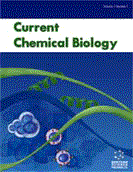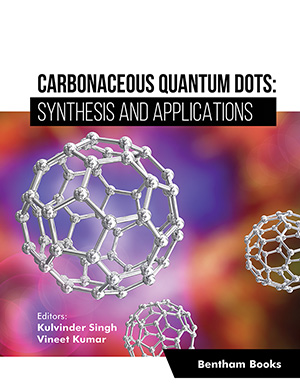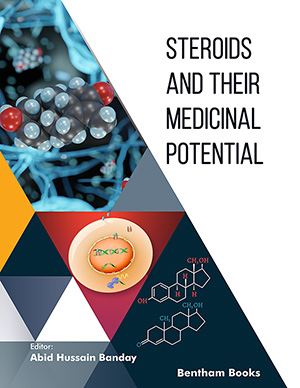Abstract
The cellular and biochemical stages of the wound-healing process are interrelated and work to repair the wound. The body heals wounds in stages, and each stage that is postponed raises the risk of microbial infection. The time needed for healing can be sped up, and unwanted events can be reduced to improve wound healing. To aid in the healing of the wounds, the medications are administered locally or systemically. In order to promote wound healing, antibiotics, antiseptics, desloughing agents, extracts, etc. have been employed. Due to their adverse effects, several synthetic medications are subject to restrictions. Investigation, identification, and formulation of plants or plant-derived combinations are required for the management and therapy of wound healing. Because they have fewer adverse effects and have been used to treat wounds for a longer period, medicinal plants are becoming more popular for use in wound healing. According to studies, medicinal herbs help diabetic, infected, and opened wounds heal more quickly. It has been claimed that medicinal herbs can speed up wound healing through a variety of processes. Many medicinal plants, including Allium sativum, Commiphora myrrha, Curcuma longa (L.), Rauwolfia serpentia, and Vateria indica, have demonstrated the ability to treat wounds.
Keywords: Wound-healing, Medicinal herbs, Allium sativum, Commiphora myrrha, Curcuma longa, Rauwolfia serpentia.
[http://dx.doi.org/10.1001/archderm.1994.01690040093015] [PMID: 8166487]
[http://dx.doi.org/10.1016/j.jep.2007.08.010] [PMID: 17884316]
[http://dx.doi.org/10.1016/j.foodchem.2008.02.016]
[http://dx.doi.org/10.1152/physrev.2003.83.3.835] [PMID: 12843410]
[http://dx.doi.org/10.1056/NEJM199909023411006] [PMID: 10471461]
[http://dx.doi.org/10.3389/fphar.2013.00177] [PMID: 24454289]
[http://dx.doi.org/10.1016/S0378-8741(02)00195-2] [PMID: 12426086]
[http://dx.doi.org/10.1016/j.jep.2016.12.006] [PMID: 27956358]
[http://dx.doi.org/10.1016/j.jep.2016.06.034] [PMID: 27321280]
[http://dx.doi.org/10.1016/j.jep.2016.04.043] [PMID: 27125588]
[http://dx.doi.org/10.1016/j.jpha.2016.05.001] [PMID: 29404008]
[http://dx.doi.org/10.1177/1534734603002001006] [PMID: 15866825]
[http://dx.doi.org/10.1177/0022034509359125] [PMID: 20139336]
[http://dx.doi.org/10.1038/cr.2010.175] [PMID: 21151201]
[http://dx.doi.org/10.1186/1472-6882-7-24] [PMID: 17623087]
[PMID: 17416566]
[http://dx.doi.org/10.1111/j.1067-1927.2004.12603.x] [PMID: 15555053]
[http://dx.doi.org/10.1046/j.1524-475X.2001.00305.x] [PMID: 11679139]
[http://dx.doi.org/10.1097/00000658-198302000-00007] [PMID: 6824370]
[http://dx.doi.org/10.1007/s00404-015-3665-6] [PMID: 25700659]
[http://dx.doi.org/10.5582/ddt.2013.v7.5.189] [PMID: 24270383]
[http://dx.doi.org/10.1177/1934578X1100601216] [PMID: 22312723]
[http://dx.doi.org/10.3329/bjp.v11i3.26024]
[http://dx.doi.org/10.1590/S0103-50532003000300018]
[http://dx.doi.org/10.1006/abio.1996.0292] [PMID: 8660627]
[http://dx.doi.org/10.1002/jcp.10160] [PMID: 12384994]
[http://dx.doi.org/10.1089/jmf.2006.9.205] [PMID: 16822206]
[http://dx.doi.org/10.1080/01480540902862236] [PMID: 19538015]
[http://dx.doi.org/10.1292/jvms.10-0438] [PMID: 21178319]
[http://dx.doi.org/10.1023/A:1006813510959] [PMID: 9562243]
[http://dx.doi.org/10.1080/15376510802442444] [PMID: 19778236]
[http://dx.doi.org/10.1016/j.ijpharm.2020.119349] [PMID: 32315748]
[http://dx.doi.org/10.4103/0975-7406.135248] [PMID: 25035641]
[http://dx.doi.org/10.1016/S0378-8741(96)01477-8] [PMID: 9121171]
[http://dx.doi.org/10.1046/j.1523-1747.1999.00761.x] [PMID: 10571733]
[PMID: 12494554]
[http://dx.doi.org/10.4103/phrev.phrev_8_18]
[http://dx.doi.org/10.15850/amj.v2n2.535]
[http://dx.doi.org/10.4103/1305-7456.130591] [PMID: 24966766]
[http://dx.doi.org/10.1055/s-2006-959430] [PMID: 8202560]
[http://dx.doi.org/10.1016/j.jep.2009.04.034] [PMID: 19397986]
[http://dx.doi.org/10.1590/S1516-05722010000300007]
[http://dx.doi.org/10.4314/tjpr.v8i5.48090]
[PMID: 25941793]
[http://dx.doi.org/10.1155/2012/375671]
[http://dx.doi.org/10.1002/ptr.5293] [PMID: 25641010]
[http://dx.doi.org/10.1248/cpb.40.2007] [PMID: 1423756]
[http://dx.doi.org/10.1016/j.jep.2009.06.007] [PMID: 19539020]
[http://dx.doi.org/10.3390/molecules27175475] [PMID: 36080243]
[http://dx.doi.org/10.1016/j.heliyon.2020.e04396] [PMID: 32685725]
[PMID: 5359097]
[http://dx.doi.org/10.1055/s-2006-957656] [PMID: 9225602]
[http://dx.doi.org/10.1248/bpb.19.567] [PMID: 8860960]
[http://dx.doi.org/10.1016/j.fitote.2003.07.013] [PMID: 14693223]
[http://dx.doi.org/10.1016/S0378-8741(03)00044-8] [PMID: 12686442]
[http://dx.doi.org/10.1248/bpb.26.1371] [PMID: 12951492]
[http://dx.doi.org/10.1007/s11418-006-0031-9] [PMID: 29435884]
[http://dx.doi.org/10.1271/bbb.110625] [PMID: 22313757]
[http://dx.doi.org/10.1155/2013/963457] [PMID: 23738336]
[http://dx.doi.org/10.1016/S0367-326X(03)00020-0]
[http://dx.doi.org/10.1016/j.fitote.2005.08.003] [PMID: 16325351]
[http://dx.doi.org/10.1007/s00114-003-0460-1] [PMID: 14564407]
[http://dx.doi.org/10.4269/ajtmh.2001.65.96] [PMID: 11508399]
[http://dx.doi.org/10.1016/j.sdentj.2019.11.011] [PMID: 33473242]
[http://dx.doi.org/10.1046/j.1524-475X.1998.60211.x] [PMID: 9776860]
[http://dx.doi.org/10.4103/0253-7613.16209]
[http://dx.doi.org/10.1002/jbm.a.37292] [PMID: 34378857]
[http://dx.doi.org/10.1016/j.ijpharm.2021.120928] [PMID: 34303820]
[http://dx.doi.org/10.1016/j.msec.2021.112245] [PMID: 34225884]
[http://dx.doi.org/10.17660/ActaHortic.2005.680.16]
[http://dx.doi.org/10.1016/j.yjmcc.2007.03.035]
[http://dx.doi.org/10.1016/j.jep.2008.07.025] [PMID: 18703125]
[http://dx.doi.org/10.1016/j.indcrop.2012.07.068]
[http://dx.doi.org/10.1016/j.jpba.2014.11.051] [PMID: 25546028]
[http://dx.doi.org/10.1016/j.jep.2015.09.015] [PMID: 26403594]
[http://dx.doi.org/10.4103/0253-7613.16570]
[http://dx.doi.org/10.1016/j.cjtee.2016.10.004] [PMID: 28209447]
[http://dx.doi.org/10.1186/s13065-021-00768-9] [PMID: 34174945]
[http://dx.doi.org/10.1016/j.indcrop.2019.02.051] [PMID: 32288268]
[http://dx.doi.org/10.1007/s11240-004-6961-6]
[http://dx.doi.org/10.1017/S0007114508020321] [PMID: 18761778]
[http://dx.doi.org/10.1016/j.jep.2005.08.033] [PMID: 16213683]
[http://dx.doi.org/10.1177/1534734607302840] [PMID: 17558005]
[http://dx.doi.org/10.4103/0253-7613.103252] [PMID: 23248396]
[http://dx.doi.org/10.5530/ijper.50.4.15]
[http://dx.doi.org/10.1016/j.jep.2017.01.016] [PMID: 28088494]
[PMID: 22737558]
[http://dx.doi.org/10.3329/bjp.v11i1.23906]
[http://dx.doi.org/10.5897/JMPR11.1281]
[http://dx.doi.org/10.47760/ijpsm.2021.v06i05.005]
[http://dx.doi.org/10.1016/j.fct.2013.06.038] [PMID: 23831308]
[http://dx.doi.org/10.1016/S1995-7645(12)60094-7] [PMID: 22647815]
[http://dx.doi.org/10.4103/0250-474X.26681]
[http://dx.doi.org/10.1089/acm.2012.0787] [PMID: 23848210]
[http://dx.doi.org/10.1007/s10086-012-1270-x]
[http://dx.doi.org/10.1007/BF02866623]
[http://dx.doi.org/10.12968/jowc.2007.16.2.27006] [PMID: 17319624]
[http://dx.doi.org/10.1016/j.foodchem.2013.02.035] [PMID: 23578611]
[PMID: 19317349]
[http://dx.doi.org/10.18535/ijmsci/v5i6.03]
[http://dx.doi.org/10.1016/j.fitote.2005.08.007] [PMID: 16236462]
[http://dx.doi.org/10.4314/tjpr.v7i1.14677]
[http://dx.doi.org/10.1016/S2221-1691(12)60070-7] [PMID: 23569944]
[PMID: 25276209]
[http://dx.doi.org/10.1016/j.jep.2010.01.051] [PMID: 20132876]
[http://dx.doi.org/10.1093/ajcn/72.2.339] [PMID: 10919925]
[http://dx.doi.org/10.5530/srp.2014.1.3]
[http://dx.doi.org/10.1016/j.phymed.2007.03.004] [PMID: 17493795]
[http://dx.doi.org/10.1016/j.apjtb.2017.01.013]
[http://dx.doi.org/10.1155/2017/1047523]
[http://dx.doi.org/10.3892/mmr.2015.4681] [PMID: 26677006]
[http://dx.doi.org/10.1002/ptr.2999] [PMID: 20066659]
[http://dx.doi.org/10.3390/antiox11050881] [PMID: 35624745]






























